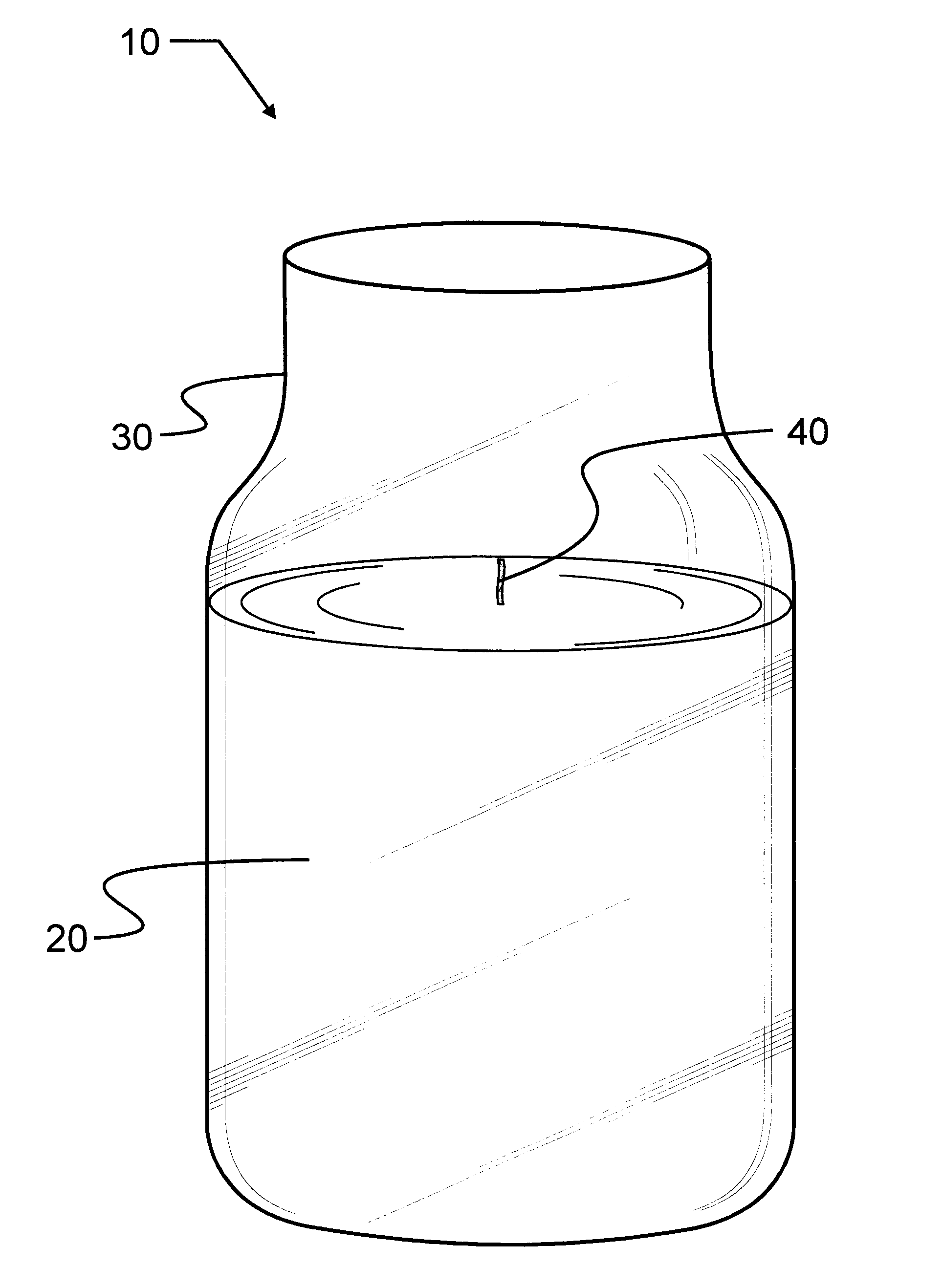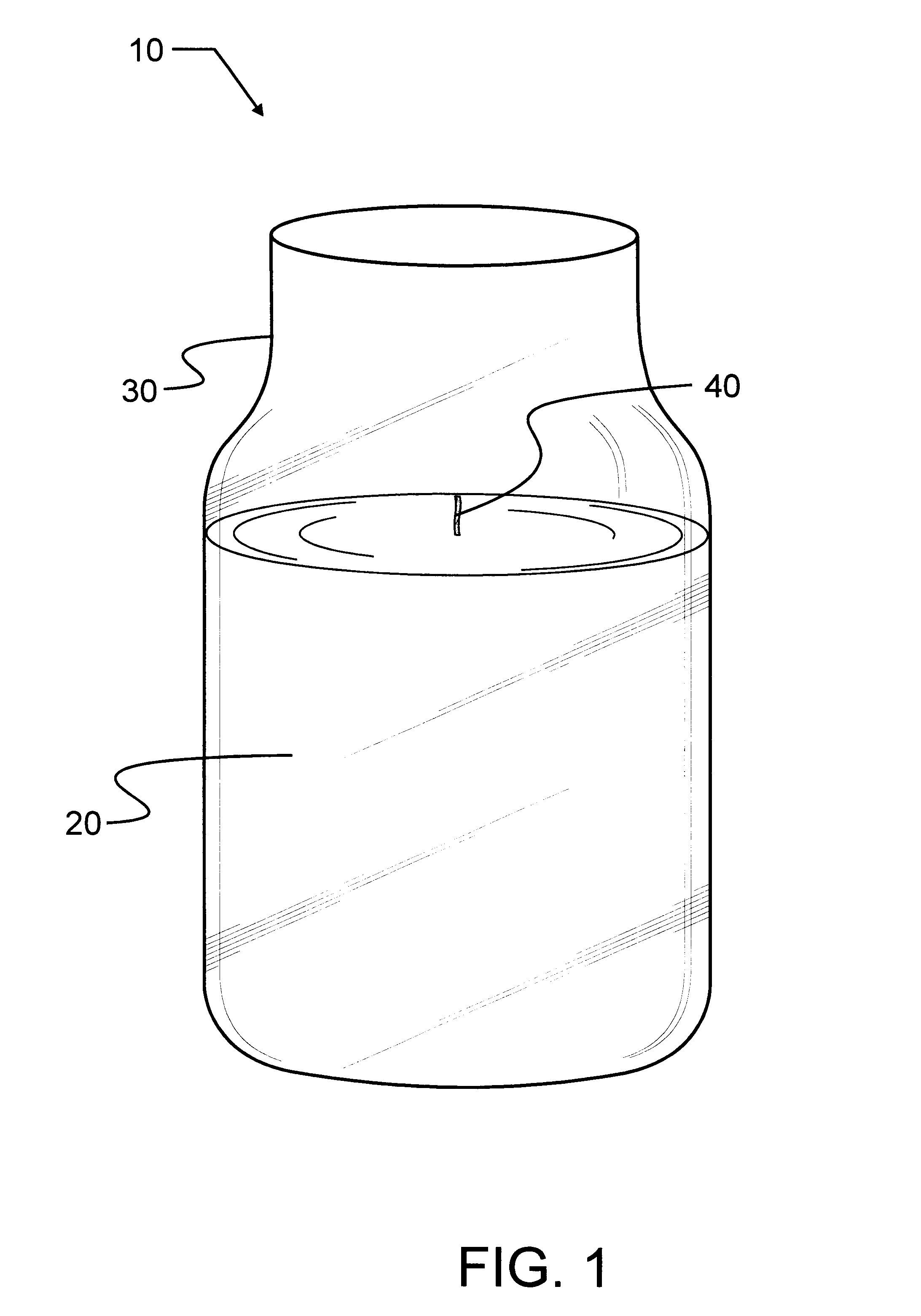Soybean wax candles
a technology of soybean wax and wax candles, which is applied in the direction of solid fuels, fatty acid production, combustion process, etc., can solve the problems of unintentional release and general undesirable liquid form for the manufacture, and achieve the effects of safe transportation and storage, expanding the utility of the candle composition, and not sagging and cracking
- Summary
- Abstract
- Description
- Claims
- Application Information
AI Technical Summary
Benefits of technology
Problems solved by technology
Method used
Image
Examples
example ii
To the molten combustible component of example I, 3 ounces of fragrance oil is added and mixed, to yield a scented candle wax composition.
example i
To the scented candle wax composition of Example II a trace of dye, normally less than 0.05 ounces, is added to obtain a colored and scented candle wax composition.
The use of synthetic wax in paraffin candle compositions is, as aforementioned, not new, but, surprisingly, the quantity required in association with the most preferred hydrogenated soybean oil is a much smaller percentage than heretofore believed necessary, if used at all. Furthermore, the resulting candle wax composition is almost entirely composed of soybean oil, ranging from at least 85 percent to 100 percent, and the combustible composition has better than 99 percent soybean oil in the examples. The much higher percentages found herein significantly overshadow the previous attempts to formulate candles from soybean oil, and provide not only a higher quality candle but also a new outlet for soybeans produced by soybean growers. The preferred embodiment composition fulfills the objectives of the present invention, incl...
PUM
 Login to View More
Login to View More Abstract
Description
Claims
Application Information
 Login to View More
Login to View More - R&D
- Intellectual Property
- Life Sciences
- Materials
- Tech Scout
- Unparalleled Data Quality
- Higher Quality Content
- 60% Fewer Hallucinations
Browse by: Latest US Patents, China's latest patents, Technical Efficacy Thesaurus, Application Domain, Technology Topic, Popular Technical Reports.
© 2025 PatSnap. All rights reserved.Legal|Privacy policy|Modern Slavery Act Transparency Statement|Sitemap|About US| Contact US: help@patsnap.com


